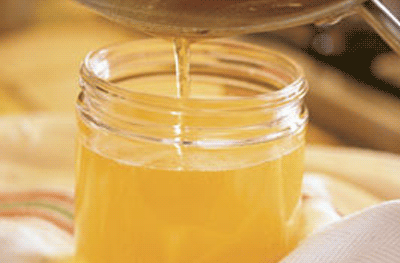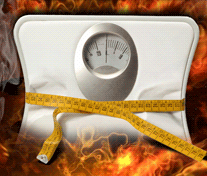Facts About Ghee
Identification
 Ghee is made by heating Indian white butter, also known as Makhan cultured butter, to separate the milk solids from the fat. The clarified butter is cooked until the moisture is evaporated, turning the milk solids brown. The hot ghee is then filtered and the milk solids are removed, leaving a rich nutty-flavored golden butterfat that has a high smoking point of 375 F, which means it will not burn during frying so will not produce damaging free radicals. Ghee is used for making pastry and roti and for deep-frying. Some imitation ghee products, called "vegetable ghee," are marketed as pure ghee but they contain trans fat and use unhealthy partially hydrogenated oils, unlike genuine ghee. Museum of Learning advises that the sale of fake ghee is illegal in many parts of India.
Ghee is made by heating Indian white butter, also known as Makhan cultured butter, to separate the milk solids from the fat. The clarified butter is cooked until the moisture is evaporated, turning the milk solids brown. The hot ghee is then filtered and the milk solids are removed, leaving a rich nutty-flavored golden butterfat that has a high smoking point of 375 F, which means it will not burn during frying so will not produce damaging free radicals. Ghee is used for making pastry and roti and for deep-frying. Some imitation ghee products, called "vegetable ghee," are marketed as pure ghee but they contain trans fat and use unhealthy partially hydrogenated oils, unlike genuine ghee. Museum of Learning advises that the sale of fake ghee is illegal in many parts of India.
Calories and Fat
 Ghee contains 112 calories per tbsp. and 33 mg of cholesterol. The total fat content is 12.7 g, of which almost 8 g are saturated fat, 3.7 g monounsaturated fat and .5 g polyunsaturated fat. Ghee provides many essential fatty acids, such as omega-3 and omega-6 that provide anti-inflammatory properties, regulate DNA production and assist with cellular communication.
Ghee contains 112 calories per tbsp. and 33 mg of cholesterol. The total fat content is 12.7 g, of which almost 8 g are saturated fat, 3.7 g monounsaturated fat and .5 g polyunsaturated fat. Ghee provides many essential fatty acids, such as omega-3 and omega-6 that provide anti-inflammatory properties, regulate DNA production and assist with cellular communication.



